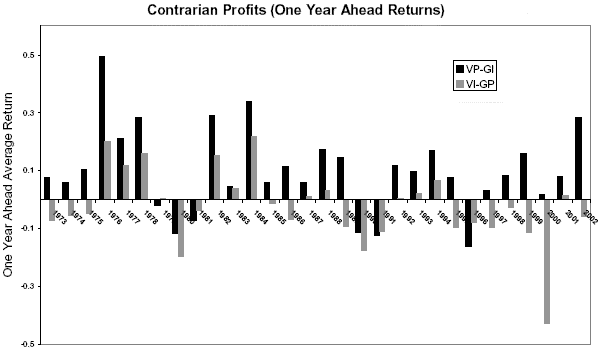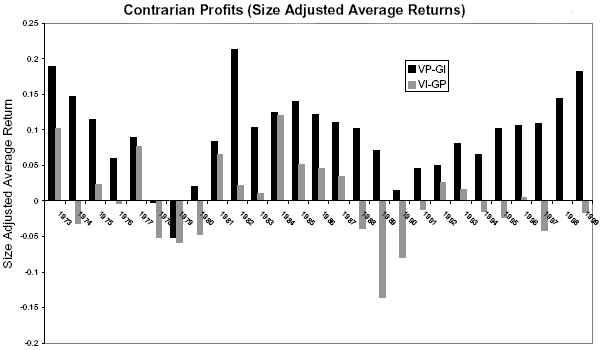Can investors/traders amplify excess returns by combining value investing with stock repurchase activities? In other words, do companies with low price-fundamentals ratios that buy back stock outperform value companies in general? In their recent paper entitled “Corporate Financing Activities and Contrarian Investment”, Turan Bali, Ozgur Demirtas and Armen Hovakimian examine returns for investing strategies that combine value indicators and stock repurchase/issuance activities. Using monthly return data and company financial statements for the period May 1972 to April 2002, they find that:
- Value beats growth, and repurchasers beat issuers.
- Value repurchasers on average dramatically outperform growth issuers. The four-year average annual size-adjusted return for a value repurchaser minus growth issuer portfolio is 9.4%, compared with just 5.2% for a broader value minus growth portfolio. Moreover, the comparable return on a value issuer minus growth repurchaser portfolio is only 0.2%.
- Value repurchasers on average are not riskier than growth issuers.
- Stock repurchasing may be essential to the value premium. There is a positive and significant relation between value indicators and returns only for subsamples with value and issuance/repurchase indicators pointing in the same direction.
- Results are robust across sample periods (good and bad economies) and across firm capitalizations.
- Results are consistent with the hypothesis that investors overextrapolate past growth rates (that value stocks are on average truly undervalued). Value repurchasers (growth issuers) on average show the largest increase (decrease) in future growth rates.
The following chart, taken from the paper, depicts the annual return differences between value repurchasers and growth issuers (VP-GI) and between value issuers and growth repurchasers (VI-GP) for one-year holding periods during 1973-2002. It shows that: (1) VP beats GI in 24 of 30 years; and, (2) VP-GI beats VI-GP in 26 of 30 years, many times by a large margin.

The next chart, also from the paper, depicts the four-year average annual size-adjusted return differences between value repurchasers and growth issuers (VP-GI) and between value issuers and growth repurchasers (VI-GP) for four-year holding periods during 1973-1999. This chart shows that: (1) VP beats GI in 28 of 30 years; and, (2) VP-GI beats VI-GP in 30 of 30 years, many times by a large margin. It shows that VP-GI reliably outperforms as a long-term investment strategy.

In summary, an exchange traded fund that focuses on value stocks with repurchase activity would be an attractive long-term investment vehicle.